Greetings, Pilgrims,
The BMW E9 series is one of the most beautiful cars, ever. The longer you look, the better the design is, integrated and solid, purposeful, yet so airy. Note the uninterrupted waistline, the thin A & C pillars, and the almost complete absence of a B pillar. Concrete yet floating? The E9 was designed by Willhelm Hofmeister. That little corner in the C pillar/rear side window is called the Hofmeister kink, and is on almost all BMWs to this day.
Sadly, this is not my car. I saw it while looking for our son, and just snapped this picture surreptitiously. It would have been creepy to do the job properly. So it’s not my best work. In general, this Signal’s pictures are from the last ten days or so, glimpses of roughly this moment, which I want to use . . . well, I hope you’ll see.
On another day recently, I had occasion to write this:
Where is my car? Which car did I take?
Of course I’m not really talking about a car, or not just a car. This text looks like, but is not, an aphorism. It’s not timeless, not placeless, not meta. Instead, the text is situated in history, in a time and place with cars. Although situated, neither the text nor the speaker is specifically located. “Where” are we? Maybe outside a bar? Maybe a hotel parking lot? Maybe Kroger’s? By the same token, the text presumes some wealth, a car, well, considerable wealth, more than one car. And yet this person of wealth is not in possession: the speaker does not actually have this car, nor any of the other cars that he, maybe she, seems to own. But maybe the speaker is mistaken? Maybe there is no car?
So perhaps this is an evocation? Perhaps you have been in such a place?
Today I’m not writing about the internet, but I am writing, and photographing, in some opposition to our digital world. I want things to be concrete, embodied, in a time and place. My desire is hard to satisfy in a digital society. Things float. Medium independence, as the computing people say. Alienation, as other folks say. Whatever. These days, it’s hard to know where you are, what you have, eventually even who you are.
Here’s another not quite aphorism. Maybe someday I’ll write the essay, but the kernel is here:
The internet is trashy Because copies are free
And that is so much of my world, your world. Sorry about that. I spend much of every day, erasing things I will not read, not responding to surveys, bombarded with images and sounds, many fake. It’s exhausting, and so empty. You know.
After decades of searching for transcendence, great truths, as I turn 60 I find myself concerned with the material world that I’d long regarded mostly as a playground and a gallery of beautiful things. It seems more serious now. I know computer scientists obsessed with old vinyl records, wood working, roses. I’m not a “materialist,” that word has been taken for other desires held by other people, but this, right here, right now, matters to me. Particular, concrete things. Individual people. Specific places.
How to write that, photograph that, without just adding to the torrent of texts and images? Can saying something, the right thing, create a sense of quiet, a space to be, even if not silence? Perhaps like the sound of waves?
The first picture is pretty much what the eye sees, a little rougher. I’ve taken many such pictures. I think the camera’s inability to handle low light conveys the feel of darkness, cold, altitude. Moonlight: a photo essay is about this feeling. Some of it was republished.
Recently, my old phone finally died. I’ll spare you the tale of hassles, but eventually I replaced the old phone with a new iPhone 16 Pro Max, which has the nicest camera and the biggest battery among iPhones (locked in), even if saddled with AI that I didn’t want. The new phone gives the user a bewildering number of options, ways to affect, even remap, the image. Some of the possibilities are very cool. In the second picture, still 3:00 am, the camera gathers a lot of light. And so we see a bright blue sky, scattered with stars. It’s beautiful. But no human sees that, any more than we see detailed images of distant planets, or cells, or heat.
Taking a picture, then, becomes a question of selecting the right modifications of the raw capture. It’s a question of taste. Of course photography has always involved selection of both subjects and techniques, but the wealth of post capture manipulations afforded by the new technology feels significantly different. At least three things, or maybe three aspects of the same thing, follow from these developments. First, for the photographer, the question is not “was I there” so much as “did I pick the right themes, lighting effects, saturations, etc., etc.” Not was I witness, but am I a (good) artist? Second, the images come to mean less. Beautiful, yes, but as in movies, the spectacular comes to be assumed. Eventually, not special. Perfectly boring. Third, and this is what concerns me today, such images effectively say less and less “about the material world. Particular, concrete things. Individual people. Specific places.” To overstate:
Photography marches toward the condition of painting At which point photography will become irrelevant
I went to buy beer. One of the dogs, stubbornly remaining a puppy, shredded a few dozen pages of my mark up of Quixote’s Dinner Party, my next book. Not sure what that means, no doubt something about the vanity of authors, and their “deathless” prose. At any rate, it was a moment.
Turning from the ephemeral to the nearly eternal, many people rarely if ever see the Milky Way. Too many lights, and in many places nights are often cloudy. In New York City, where I sometimes teach, one does not see the stars. When was the last time that you, Pilgrim, saw the Milky Way? Do not worry if you’ve missed it, it’s still there. Waiting.
Even our not seeing seems to me to be emblematic of something. But to say that something is emblematic is to say that it signifies in a field, vis-a-vis other possibilities. High and dry in the Rockies, hard against the National Forest, I see the Milky Way all the damn time. Few cars, few BMWs, have the design purity of an E9. One learns to appreciate such things.
Appreciation of this, while being aware of other possibilities, often lends poignancy to experience. This is special in itself, but probably cannot last, at any rate this moment cannot last — hence poignancy, or what the poet Miloscz somewhere calls tendresse, the knowledge that loved ones will die. At the same time, and Miloscz himself was good about this, one should guard against a romantic and somewhat indulgent, even self-dramatizing, morbidity. It’s bad taste. And many changes are happy. The child will not last, as child, either, and that is a good thing. Yet watching the baby crawl underneath our long legged and very indulgent old dog, one treasures the moment.
Stanford is sometimes mocked as a country club. I wonder why? Seriously, then Prime Minister John Major’s “long shadows on county grounds” comes to mind. I know, that was England, but the phrase is good. This is something, haute bourgeois, peaceful, beautiful. There is more to life, of course, but peaceful and beautiful is a real accomplishment, if of a sort occluded by the armature of the last several generations of intellectuals, in the North Atlantic at least. But that’s intellectual history and intellectuals’ failing. Consider, in the same vein, hot coffee and sleek young parents at their children’s soccer game on a dewy Saturday morning. At the same moment, physical embodiement, even eros, and appreciation — it cannot last. Watching, floating, on top of reality, sur-real, saying this is special, this is what this is, now.
Pine grosbeak on a bluebird day. I have no idea how these birds survive the winter. Most of the other birds have migrated, or at least gone down to lower altitudes.
In Kansas, on the afternoon of the 11th day of Christmas, rain turned freezing, and driving turned dangerous. On the 12th day of Christmas, a big snowstorm blew in, with serious cold coming behind. Our children, adults now, were snowed in for a few days. I grilled a slab of pork ribs, low and slow, snow blowing off the roof. Concrete, yet floating.
Happy Birthday to me, and enjoy, Pilgrims.
— David A. Westbrook

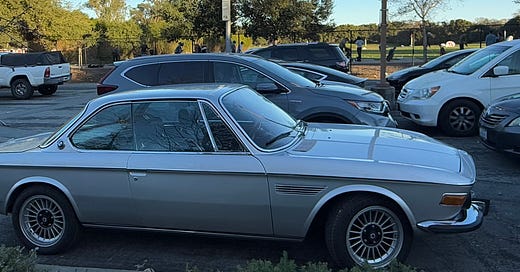



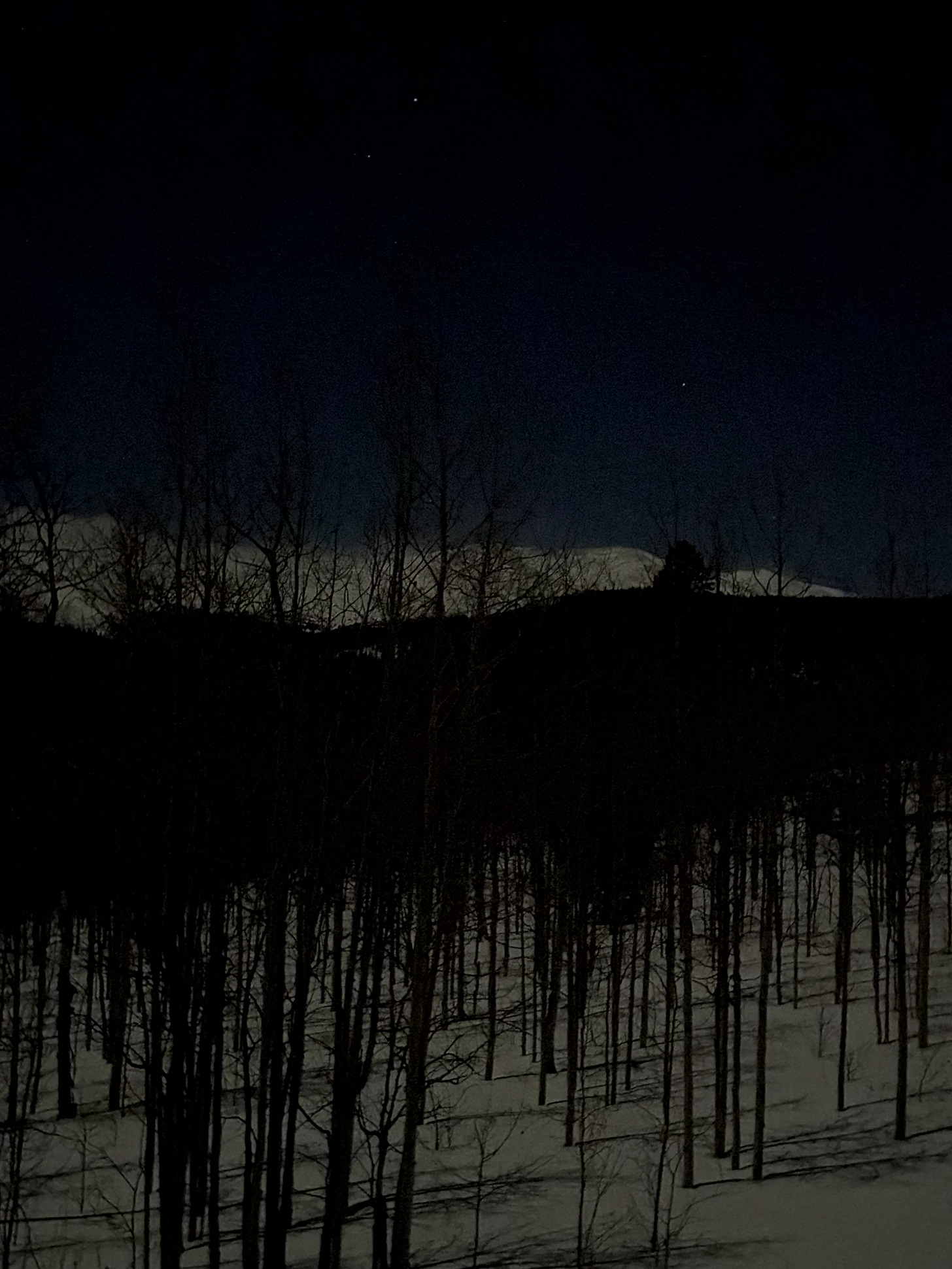
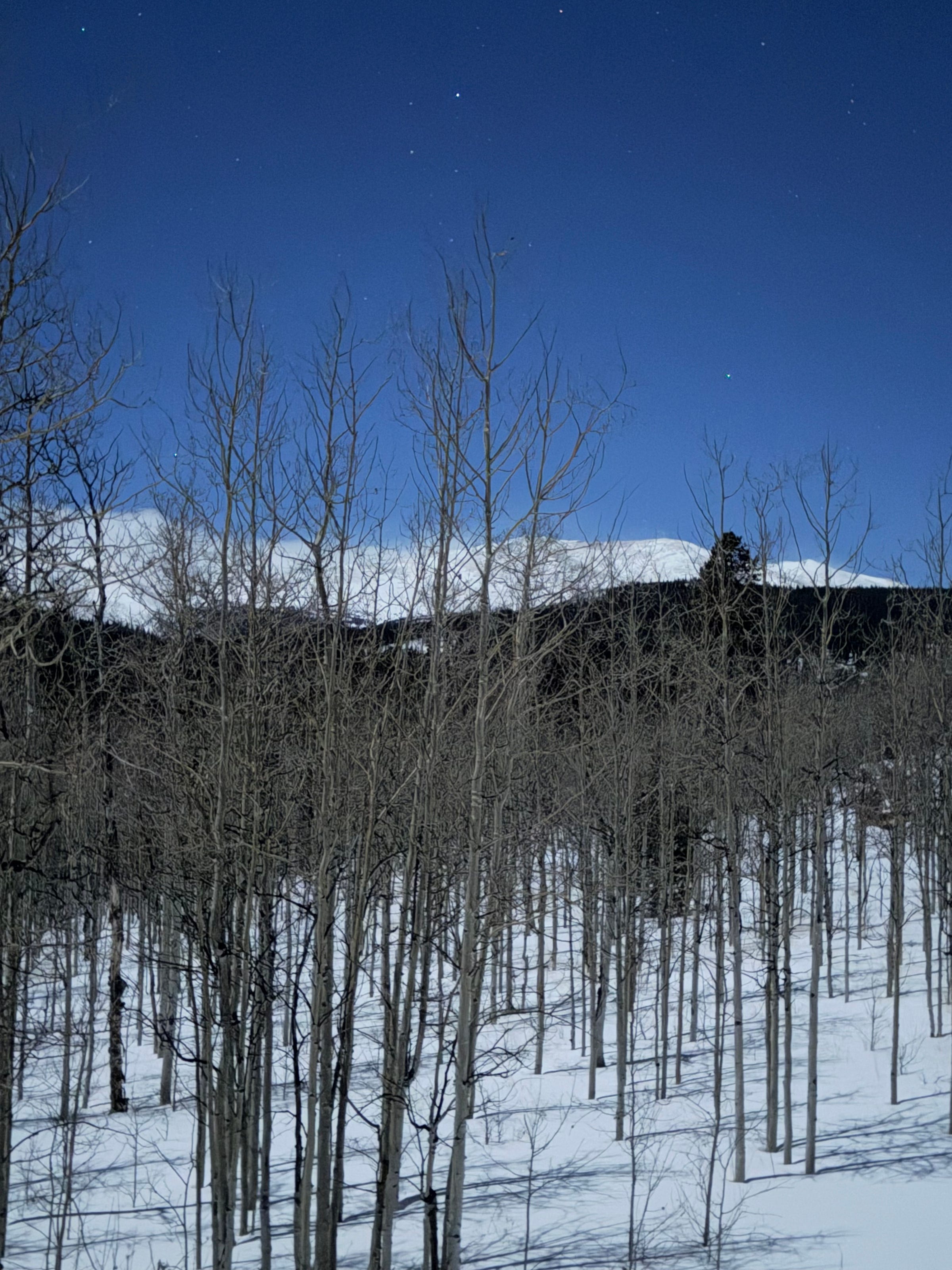
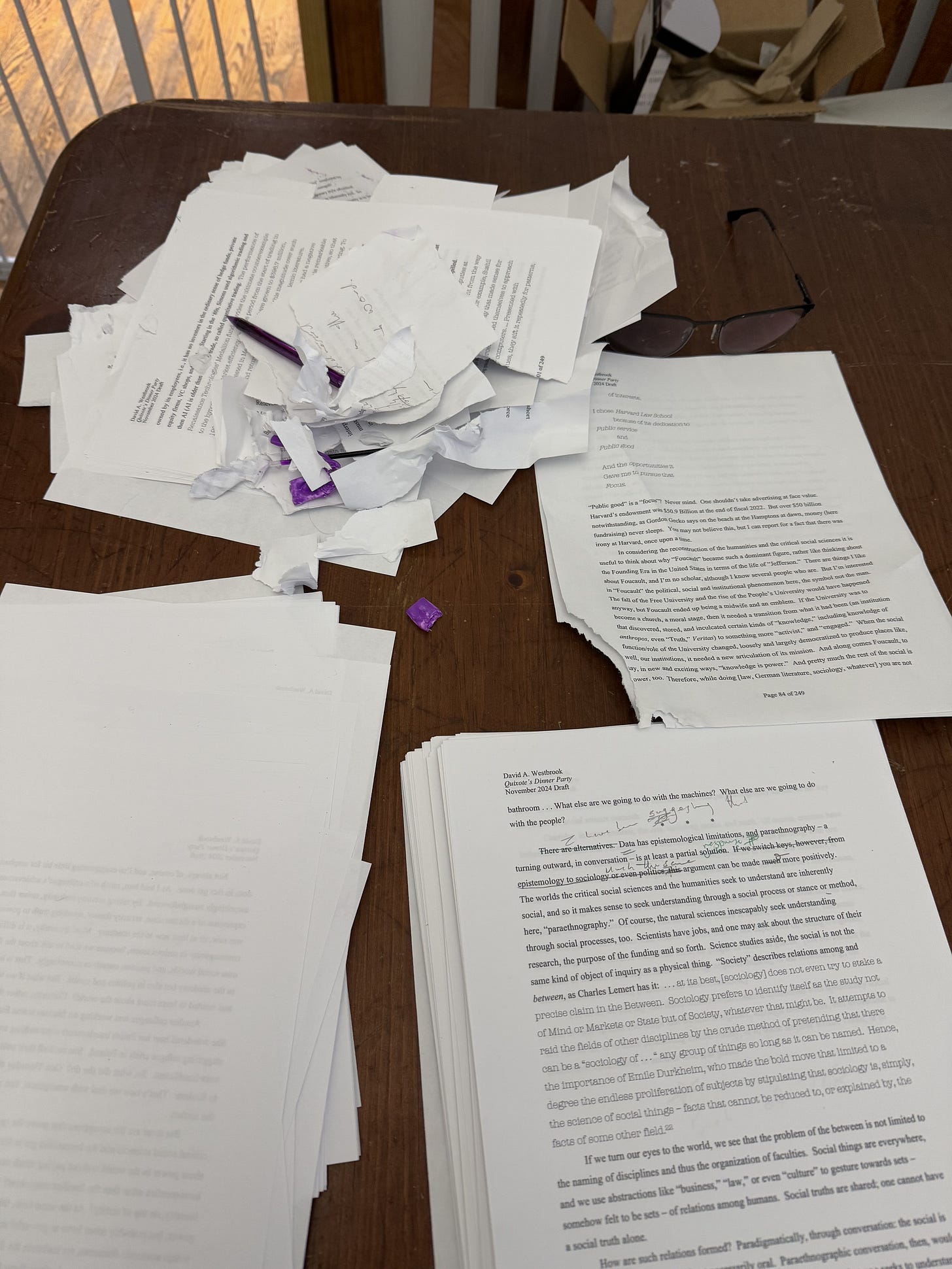
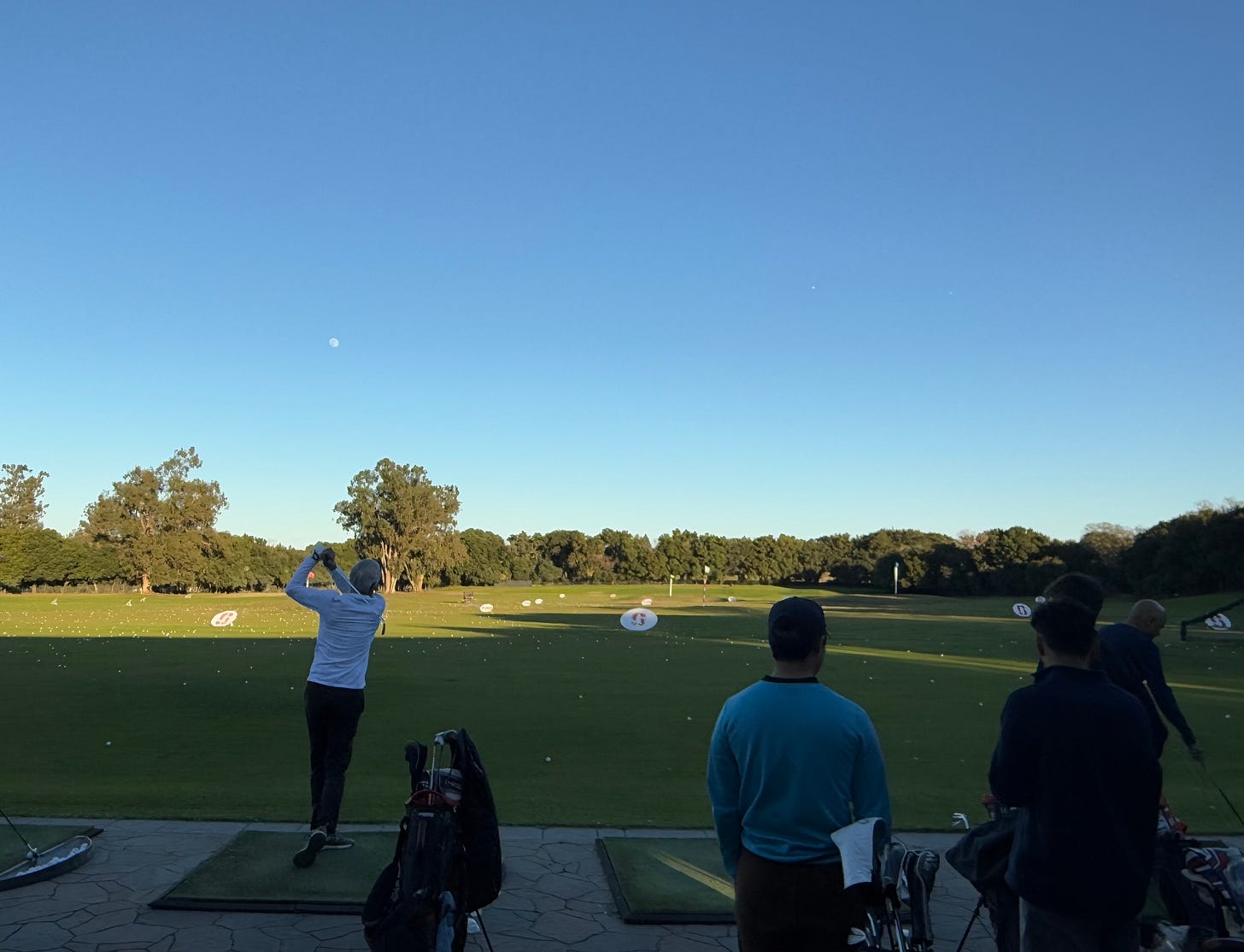


David, this reflection should be marked as one of your best. You point the way to the redemption or rescue for which we all yearn: first seeing the old man, walking on, then really seeing the old man, stopping and turning around and doing what you could do in the moment to acknowledge and respond to his existence among us, if not his immediate real needs.
I also affirm your pointing to cultural changes that mark resistance to the dominant culture or “civilization” that we tolerate without much thinking but which damages creation, particularly in the long run.
David- I echo this all the way: "watching the baby crawl underneath our long legged and very indulgent old dog, one treasures the moment." Hope you're well, David? Cheers, -Thalia